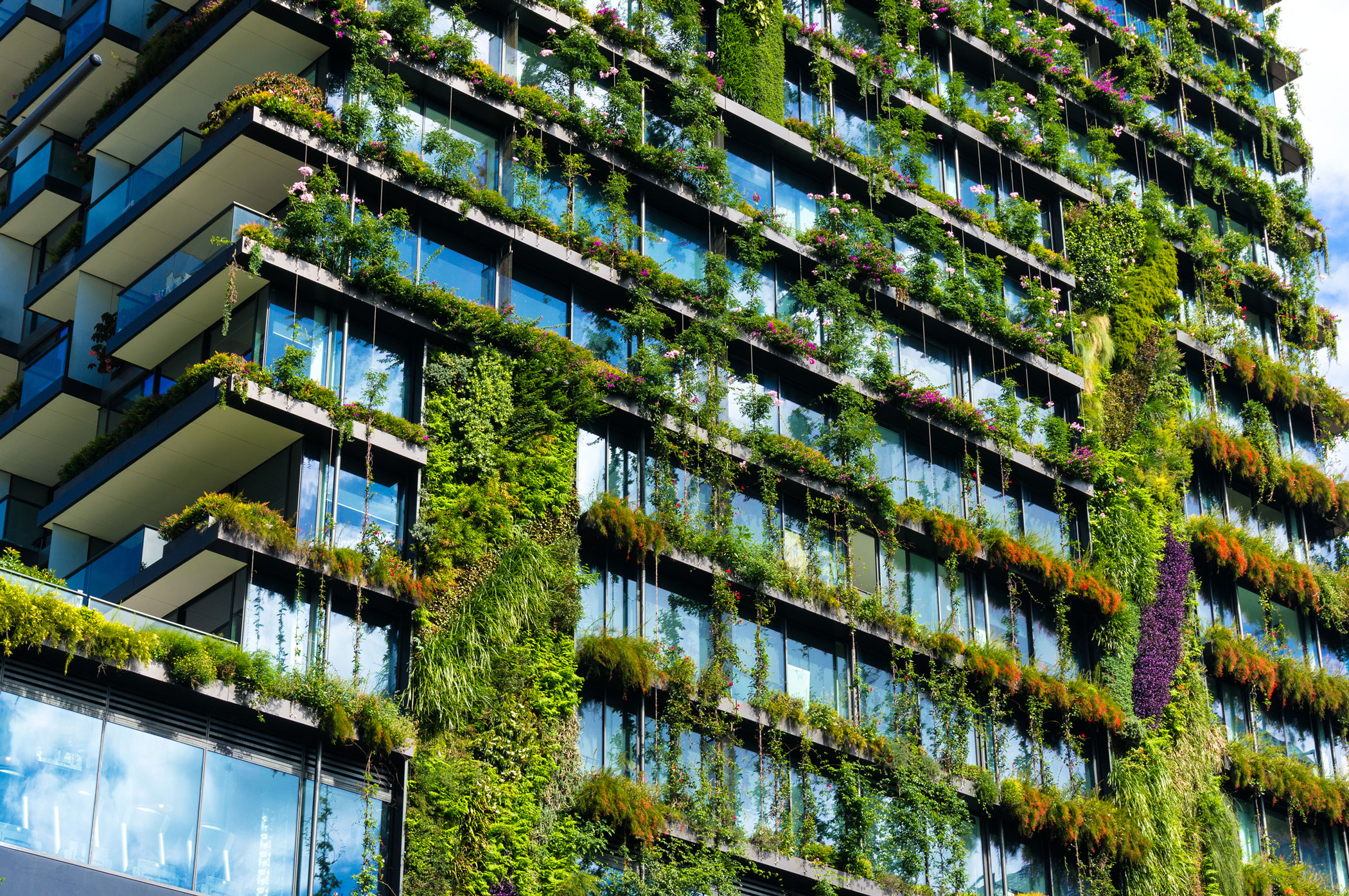Top green projects and sustainability innovations in 2023
 Top green projects and sustainability innovations in 2023
Top green projects and sustainability innovations in 2023
Wrapping up a year in the wake of the recently concluded COP28 UN climate summit that resulted in, well, mild levels of agreement on the role of fossil fuels, it is possible to sense a slightly increased urgency toward this most pressing planetary issue on a high-minded diplomatic level. As we’re quickly approaching the quarter mark of the 21st century, however, much more concrete action and innovation in various sectors of the AEC domain is needed — and is already happening — on the ground level as well, as we have seen in our reporting on Archinect.
Continuing with our 2023 Year in Review series, let’s take a look back at some of the story highlights focusing on decarbonization efforts, material research, policy implementation, and successful applications of sustainability principles this year.
Building Electrification

The process of gradually phasing out fossil fuels in new construction and decarbonizing the building sector made further strides, with New York State leaders agreeing to do away with natural gas appliances in most new buildings in the coming years, Boston requiring the electrification in government-owned buildings, and Washington State also effectively blocking fossil-fueled appliances in new construction with the declared goal of eliminating all greenhouse gas emissions by 2050.
Energy-efficient heat pump technology, meanwhile, continued to enjoy rapid adoption, as data from the AIA’s By The Numbers report suggested in September.
Adaptive Reuse

Adaptive reuse was (for very good reasons) one of this year’s buzzwords. From incentivizing feasible office conversions on a federal level to considering the future potential of high-rise parking areas as urban farms within the municipal realm, our news editorial was buzzing with future strategies as well as successful executions of the mantra this year.
Popular examples were the ambitious, PAU-designed The Refinery at Domino office conversion at the former Domino Sugar Factory site in Brooklyn; the transformation of an abandoned Detroit book depository as a startup hub for mobility innovation by a team including Gensler and CIVILIAN; MVRDV’s redesign of an aging skyscraper from the 1990s as the new vibrant Shenzhen Women & Children’s Centre; or the redevelopment project of Harvard Law School’s Lewis International Law Center led by TenBerke.
3XN, whose massive Quay Quarter Tower ‘upcycling’ conversion of a 1970s tower in Sydney, Australia, won the CTBUH Best Tall Building Worldwide and the World Building of the Year award, was also distinguished with Fast Company’s Most Innovative Companies 2023 title this year.
Passive House

Successful implementations of passive house strategies on various scales also made a few headlines this year: In October, we reported that Boston’s new Handel Architects-designed Winthrop Center had been certified by the Passive House Institute as the largest Passive House office design in the world.
On a single-family scale, we published a handsome retrofit of a 1970s garage in rural Quebec by Montreal-based Atelier L’Abri and the refurbishment of a traditional Edwardian terrace house in the British capital into a highly energy-efficient abode led by the firm Architecture for London.
Policy

The policy sector — traditionally a sluggish apparatus to finally come up to speed — introduced a number of legislative and regulatory measures to combat carbon emissions in the built environment.
In June, the United Nations Secretary-General António Guterres called for significant changes to the cement industry by demanding accelerated decarbonization efforts, followed by a $90 million commitment to building code upgrades by the Biden Administration in order to increase energy efficiency, resiliency, and overall performance of American buildings.
On the state level, California made history in August by becoming the first U.S. state to mandate embodied carbon reduction measures in addition to efforts to amend building codes to facilitate adaptive reuse. New York state was busy, too, introducing a “first-in-the-nation” mandate for concrete emissions in September, while New York City launched a 40,000-unit adaptive reuse office conversion plan and a new mass timber construction grant program this year.
The American Institute of Architects, meanwhile, reminded us in August that nearly $20 billion in grant funding, allocated by the Greenhouse Gas Reduction Fund under the Inflation Reduction Act, had been made available by the Environmental Protection Agency for adaptive reuse and decarbonization projects.
Software & AI

Novel sustainability software solutions and approaches were popular in our news reporting as well.
In February, Architecture 2030 presented the new CARE (Carbon Avoided Retrofit Estimator) Tool, which offers assistance in measuring the carbon reduction of reuse projects.
A deep learning model is the driving force behind a new AI tool, trained by researchers from the University of Cambridge’s Department of Architecture, that seeks to support architects with “hard-to-decarbonize” (HtD) home retrofitting projects.
In May, Henning Larsen offered a glimpse into the firm’s seven-step computational design process, using the Kangaroo and Galapagos plugins on Grasshopper, that helped create the geometrically complex and currently under-construction World of Volvo mass timber center in Gothenburg, Sweden.
Material Research & Academia

Architecture and engineering schools also planted their flags at the forefront of decarbonization efforts within the educational sector.
The University of Toronto’s School of Engineering announced plans for a new Centre for the Sustainable Built Environment at the beginning of the year while also showing off their research into multilayered optofluidics window systems that could assist with heating, cooling, and lighting in future buildings.
Researchers from MIT published their open-source concept for a cooling chamber that promises to use 75% less energy than conventional refrigerated cold rooms, and also announced further findings from their research of using baking soda to help concrete projects reduce their carbon footprint.

Focusing on the building envelope, University of Chicago researchers discovered a new “chameleon-like” material with the potential to reduce the need for mechanical HVAC systems, while a team at the University of Maryland developed a “cooling glass” coating that can redirect building heat into space by reflecting up to 99% of solar radiation.
In Switzerland, meanwhile, researchers from Empa’s Building Energy Materials and Components Lab made progress toward carbon-storing building insulation made from plant-based materials, while ETH Zurich’s Digital Building Technologies group 3D printed lightweight insulation foam using recycled industrial waste materials.

Yale University’s new Yale Center for Ecosystems + Architecture collaborated with the UN Environment Programme on a report that called for further decarbonization efforts in the construction sector.
In May, we published a mass timber nature observatory in a forest near Barcelona designed and constructed by a team of students and researchers from the Institute for Advanced Architecture of Catalonia’s Masters in Advanced Ecological Buildings and Biocities program.
Mass Timber

Mass timber continued to make our news headlines this year — with innovative completed buildings laying the groundwork for more to come, as well as plenty of future project announcements leading to greater acceptance of the carbon-capturing building method.
Canada and forest-rich northern U.S. regions led the way with newly-completed structures, such as TenBerke’s hybrid‑CLT residential hall at Brown University; the A-Building Expansion at Centennial College by DIALOG and Smoke Architecture; the HGA-designed Barry Mills Hall and Gibbons Center for Arctic Studies at Bowdoin College in Maine; the new Health Sciences Education Building at the University of Washington by The Miller Hull Partnership, The S/L/A/M Collaborative, and Lease Crutcher Lewis; or the 70-foot mass timber pedestrian bridge at Toronto’s new Limberlost Place building for George Brown College, designed by Moriyama and Teshima Architects and Acton Ostry Architects.

Outside of North America, we covered the Toyo Ito-designed “Gaia” Business School building for Singapore’s Nanyang Technological University (reportedly now the largest mass timber building in Asia), as well as a 15-unit social housing development by PietriArchitectes using cross-laminated timber in France.

Professional Recruiter Associates